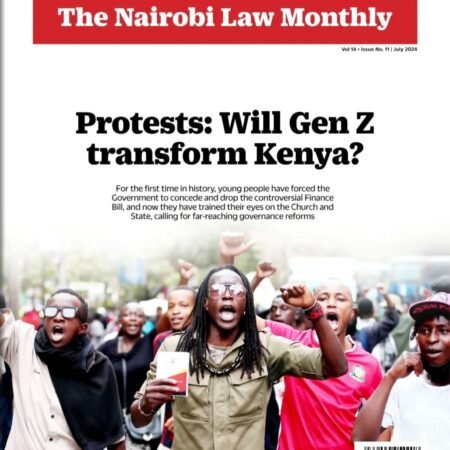By David Onjili
According to a Central Bank of Kenya report released early October on the state of financial sector stability in Kenya reveals the banking sector accounts for more than 60 percent total assets in the sector as at December 2017. In the same period, credit growth declined owing to “demand and supply factors” as households avoided credit, and the prevailing weak corporate structures in the country.
-
Sale!
Download Nairobi Law Monthly Magazine July 2024 Edition
Downloads Original price was: KShs200.00.KShs100.00Current price is: KShs100.00.
Kenya’s financial sector, which includes deposit taking institutions (commercial banks), non-deposit taking institutions (insurance, pensions and capital markets industry) and financial market infrastructure providers, is regulated and supervised by Capital Markets Authority (CMA), Central Bank, Insurance Regulatory Authority (IRA), Retirement Benefits Authority (RBA) and Sacco Societies Regulatory Authority (SASRA).
The report also notes that declining profitability in the banking sub-sector limits the capacity of banks build strong capital buffers through retained earnings. In the period under review, Return on Assets (ROE) declined from 3.2 percent in 2016 to 2.6 in 2017, while Return on Equity (ROE) stood at 20.6 percent from 24.4 in 2016. This is explained by decreased lending to the private sector and an increase in the cost of deposits.
As at December 2017, Kenya’s public debt had grown by 21.45 percent, with external loans accounting for the bulk of the increase. Although a bulk of these loans were directed to infrastructural projects, such as the standard gauge railway, many such projects have not begun realising returns.
The country’s property prices maintained a downward trend throughout the year – drawing from reports such as those by Hass Consult and Kenya Bankers’ Association (KBA). The Hass Consult All Types Property Index showed that property prices declined sharply, with negative growth rates reported from around May 2017. House selling prices reduced by about 4.10 percent in the last quarter, compared to a 10.21 percent increase the previous year, as the market experienced large unsold stocks.
Nevertheless, financing of real estate has continued to grow outside of the banking sector, as private equity and insurance companies have become significant financiers of property markets in the country. Mortgage finance companies, Saccos, Capital markets (Real Estate Investment Trusts) and off-plan purchases contributed immensely in this respect. Saccos in particular focused on funding land purchases and constructing homes for members in urban areas.
At the same time, bank credit to the real estate segment also grew by 30.82 percent.
At the beginning of the second quarter, following sustained pressure from the CBK and ministry of Information, Communication and Technology, mobile network operators interconnected their services on a trial basis, to allow customers transact between different mobile money schemes. As a result, subscribers to mobile money services grew to 37 million in 2017 from 35 million in 2016.
The CBK report illustrates that digital credit in the country has expanded since 2015 when they were adopted as financial institutions, as government sought to leverage digital channels to expand access to credit products. 26 percent of Kenyans are digital borrowers.
There are more than 20 digital credit providers, the most dominant ones being Mshwari, KCB M-Pesa, M-Coop Cash and Equity Bank’s Eazzy Loan. The digital credit ecosystem also includes a range of non-bank, credit-only lenders that currently operate outside of the regulatory perimeter of CBK, like Tala and Branch.
In March 2017, 8.6 million mobile loans were approved, representing a total value of Sh34.5 million as the volume of new mobile loans approved monthly by commercial banks increased by 53 percent, while the value of new mobile loans approved monthly increased by 81 percent. The digital loans are short-term, of low value and generally require no security to obtain.
A FinAccess Household Survey 2016 demonstrated that digital credit filled an important gap in the credit market – providing short-term, easy-to-access liquidity. Mobile banks are the primary source of funds for most day-to-day spending needs and emergencies, which are not met by banks or microfinance institutions that traditionally target longer-term loans for houses/land or business.
In 2017, CBK and the Kenya Bankers’ Association launched a Cost of Credit portal that allows consumers to compare the cost of credit across different products and providers to enhance transparency, in a bid to protect against financial stability risks to the new financial entrants from digital access. It is also expected to guard against exploitative interest and fees. (




